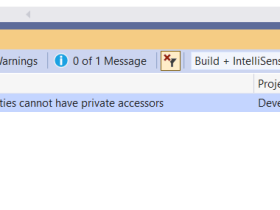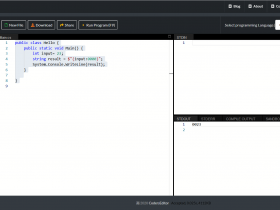C# Program to Demonstrate Boxing Operations
Boxing and unboxing are fundamental concepts in C# related to the manipulation of value types and reference types.
Problem Statement
You are tasked with implementing a simple application that demonstrates the concepts of boxing and unboxing in C#.
C# Program to Demonstrate Boxing Operations
using System;
class Program
{
static void Main()
{
// Boxing: Converting an int to an object
int intValue = 42;
object boxedValue = intValue;
// Unboxing: Converting an object back to int
int unboxedValue = (int)boxedValue;
Console.WriteLine("Original int value: " + intValue);
Console.WriteLine("Boxed object value: " + boxedValue);
Console.WriteLine("Unboxed int value: " + unboxedValue);
// Boxing with other value types
double doubleValue = 3.14159265359;
object boxedDouble = doubleValue;
// Unboxing the double
double unboxedDouble = (double)boxedDouble;
Console.WriteLine("Original double value: " + doubleValue);
Console.WriteLine("Boxed double value: " + boxedDouble);
Console.WriteLine("Unboxed double value: " + unboxedDouble);
// Demonstrating boxing with value types
bool boolValue = true;
object boxedBool = boolValue;
// Unboxing the boolean
bool unboxedBool = (bool)boxedBool;
Console.WriteLine("Original bool value: " + boolValue);
Console.WriteLine("Boxed bool value: " + boxedBool);
Console.WriteLine("Unboxed bool value: " + unboxedBool);
}
}
How it Works
Boxing:
- Create a Value Type: In boxing, you start with a value type variable. For example, let’s consider an
intvariable namedintValue, which holds the value42.csharpCopy codeint intValue = 42; - Boxing Operation: When you want to box this
intvalue, you assign it to a variable of a reference type, such asobject. This process involves creating a new object on the heap and copying the value of theintinto that object. TheboxedValuevariable now refers to this newly created object. At this point,boxedValuecontains a reference to an object on the heap, which holds a copy of theintvalue42.
Unboxing:
- Retrieve the Boxed Object: To unbox the value, you first need a reference to the boxed object. In our example,
boxedValuecontains the reference to the boxedint.Assuming boxedValue still refers to the boxed int - Unboxing Operation: To retrieve the original
intvalue from the boxed object, you explicitly cast theboxedValuevariable back to its original value type (intin this case).csharpCopy codeint unboxedValue = (int)boxedValue; // Unboxing operationThe unboxing operation checks if the boxed object is compatible with the specified target value type (intin this case). If it is, it extracts the value from the boxed object and assigns it to theunboxedValuevariable.
Input/ Output






Leave a Review